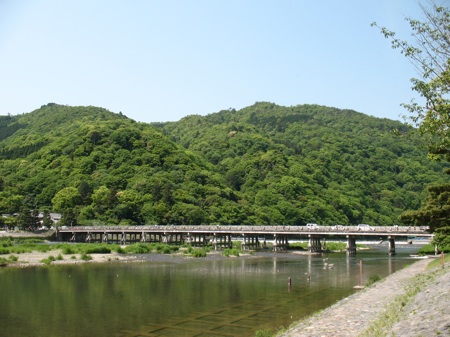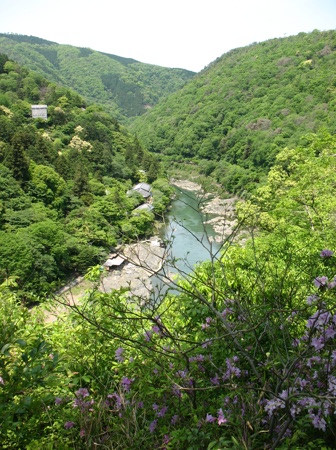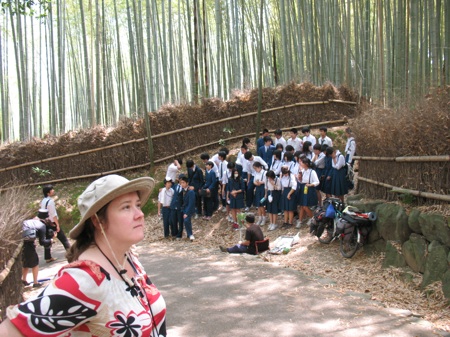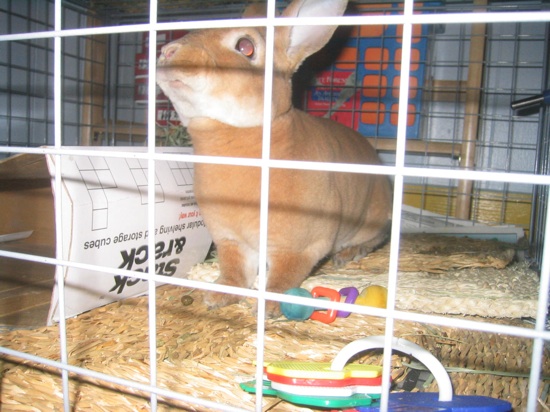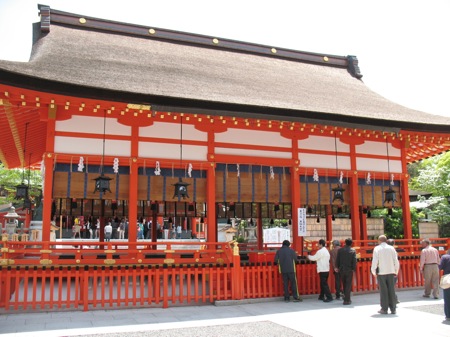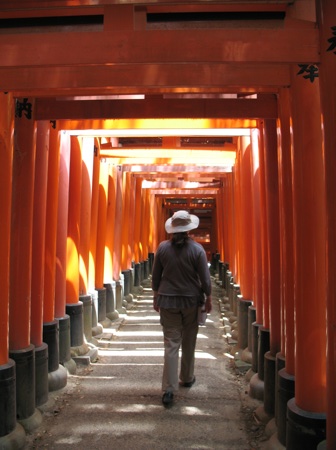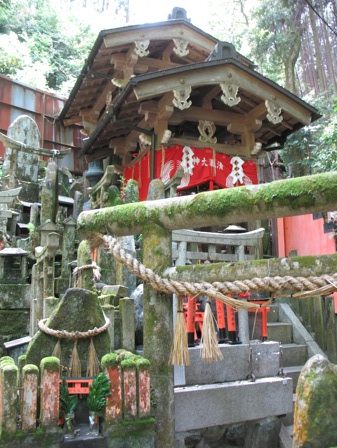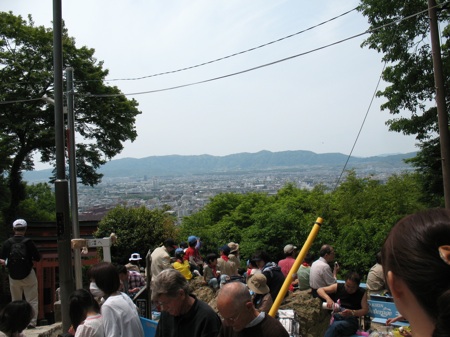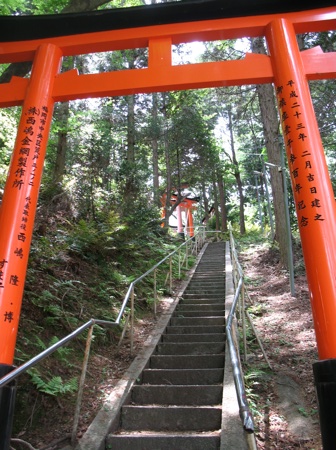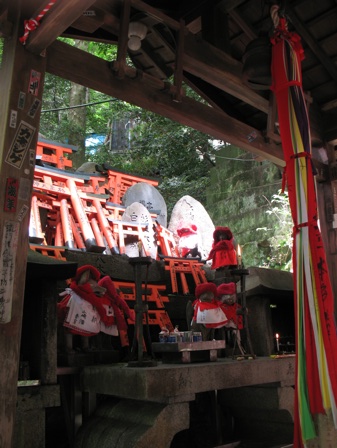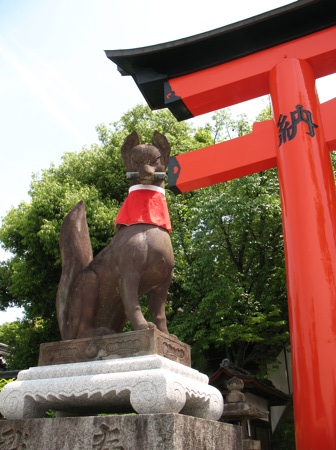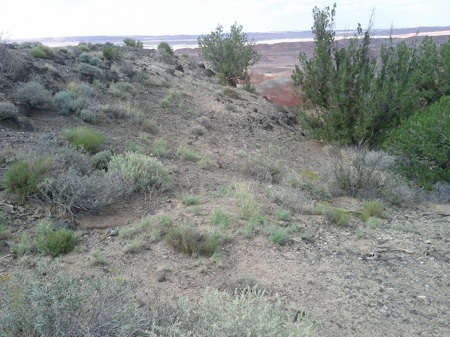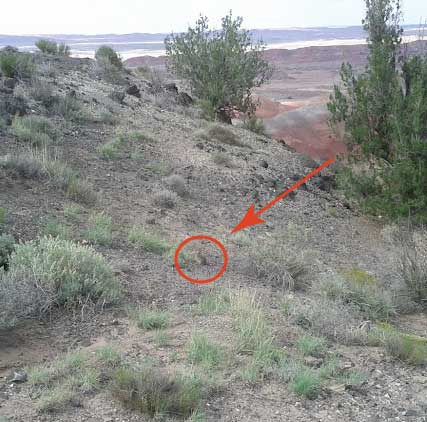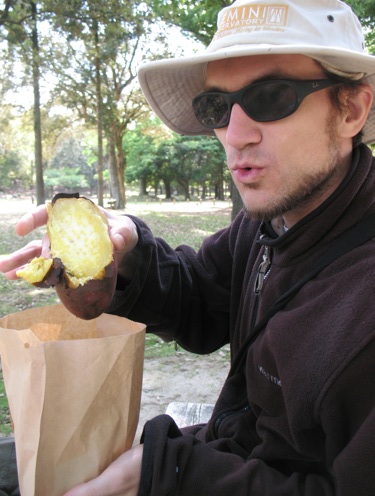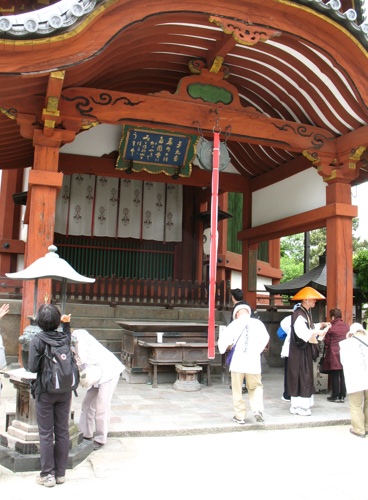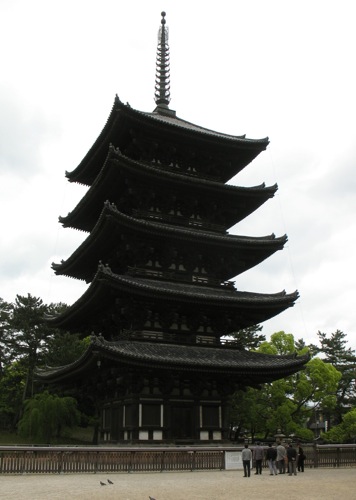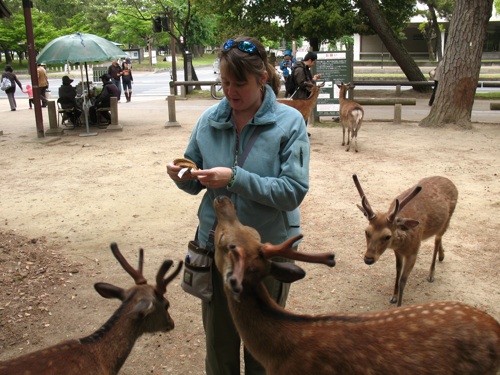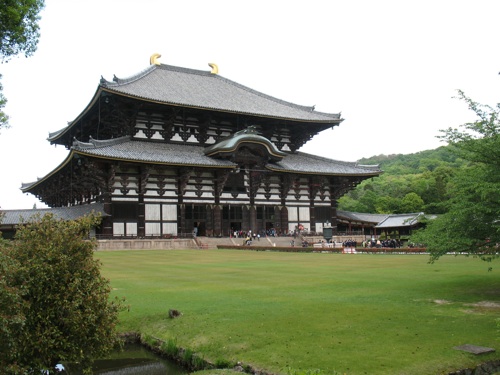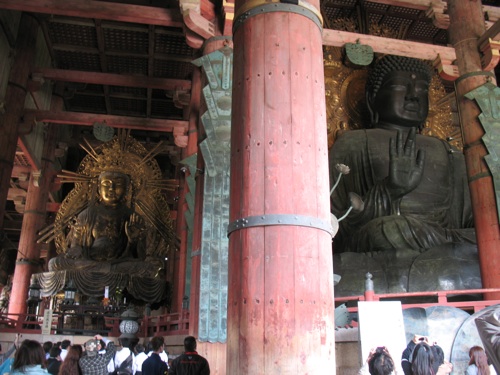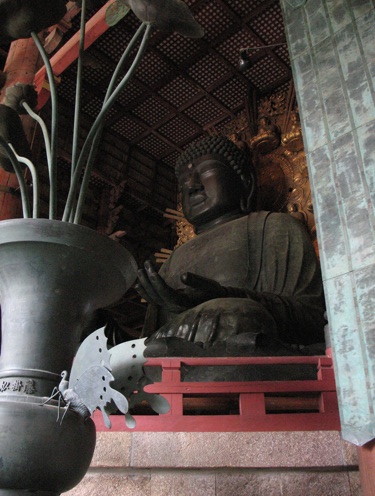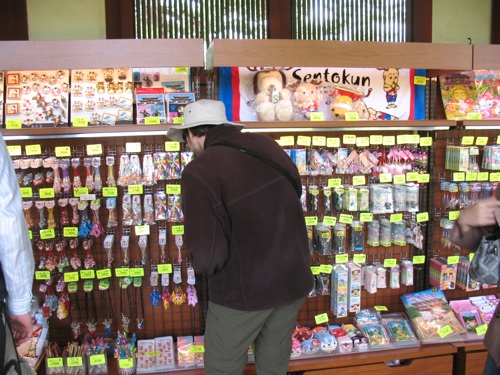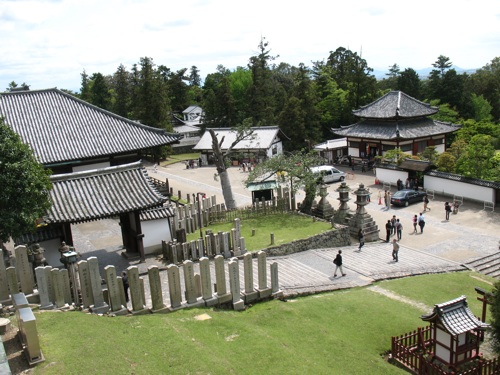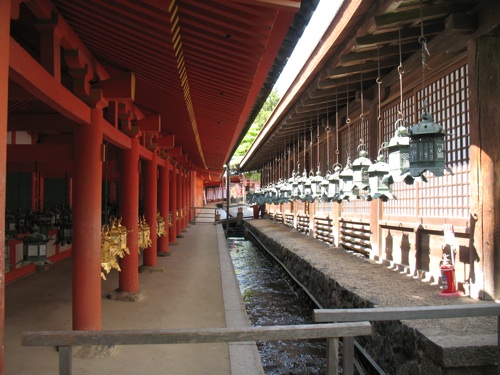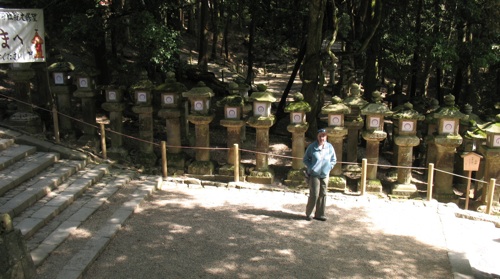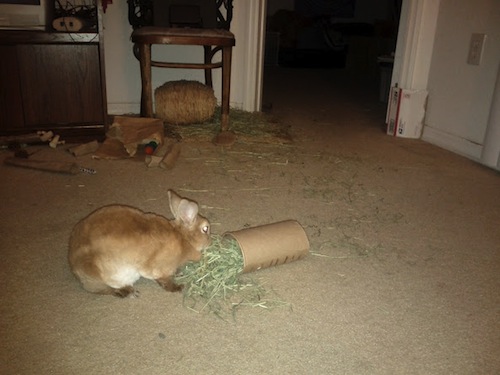After visiting the Arashiyama bamboo grove, we headed north on a scenic walk, visiting two temples along the way: Jojakko-ji (on a hill with an expansive view of the city) and Gion-in (a tiny temple really only known for its moss garden), and a cemetery (Adashino Nenbutsu-ji).
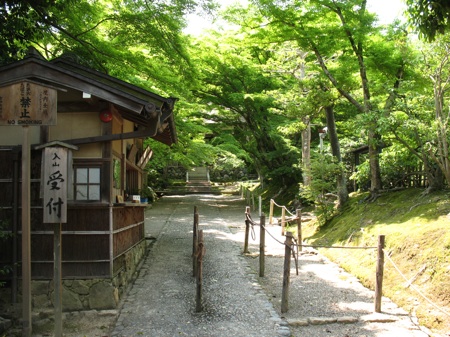
Jojakko-j was very leafy and cool, which was ice because it was a pretty warm day. It had some neat moss-covered stairs, wooden buildings, and a small pagoda near the top of the property.
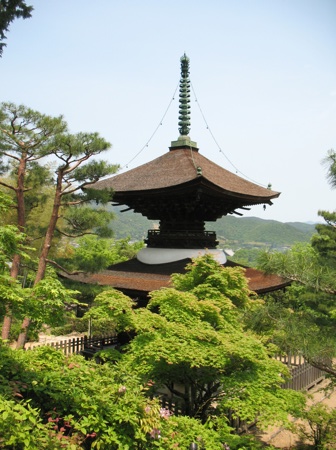
One thing Arashiyama is famous for is its moss gardens. We didn’t visit the most famous (Koke-dera) because you have to apply several days in advance via postcard to get in. But Jojakko-ji and Gion-in had enough moss to satisfy me.
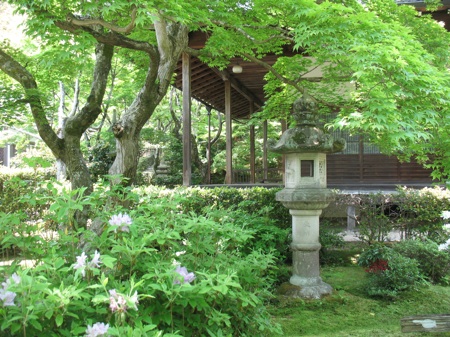
This was a good place to sit and be peaceful for a bit.
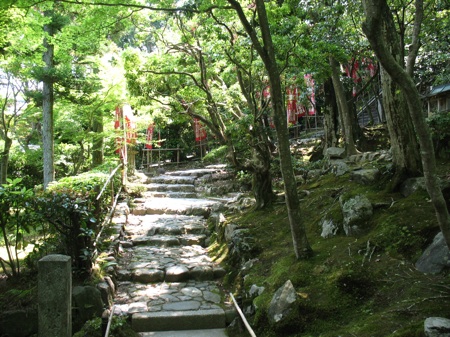
Yan was perhaps less impressed by the moss gardens, in part because entrance fees can add up if you’re going to multiple little temples in a row.
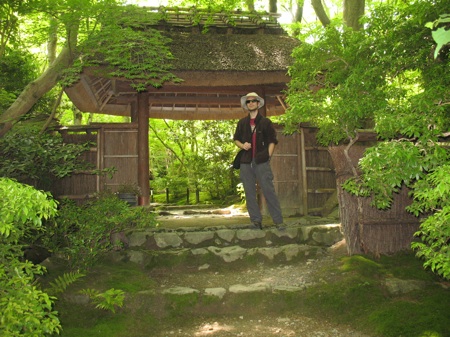
While at Jojakko-ji, the moss was sort of just there being soft and verdant, at Gion-in the moss was actually landscaped! Different varieties were used to create mossy features under the maple canopy. How cool is that?

There were little planters with different species labeled:
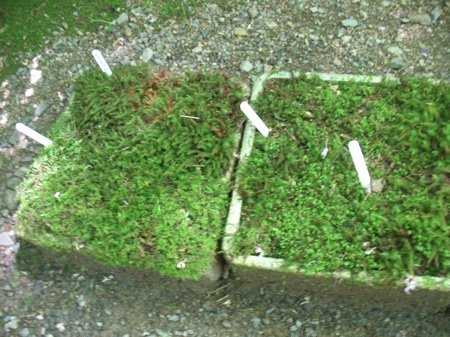
It was also interesting to see how the light quality under the maples varied from the quality in the surrounding bamboo forest.
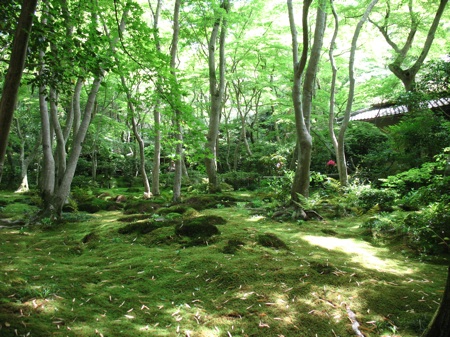
The light under the bamboo was quite different:
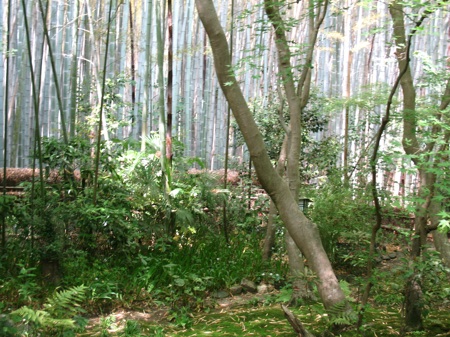
At one point, we saw a cat sleeping on the moss. Kawaii!
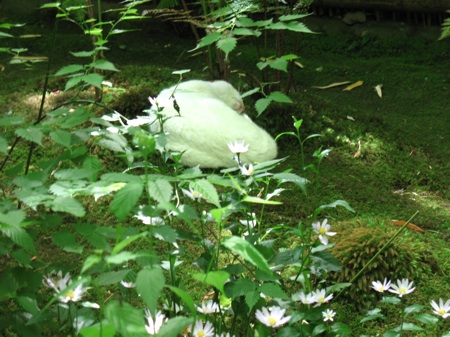
The last place we visited on our walk was a graveyard: Adashino Nenbutsu-ji. As the name indicates, it’s a Buddhist site. It’s known for a collection of small stone Buddha statues-grave markers-all packed together in rows.
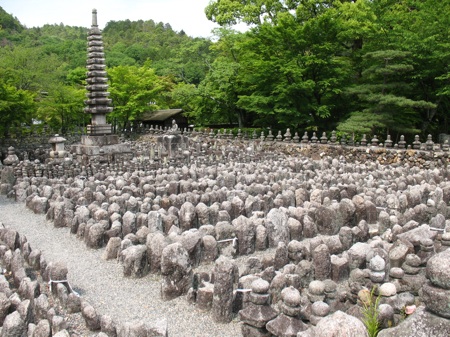
The markers were apparently collected from old graves around the area about a century ago and brought to this one site to consecrate them. It’s still an active graveyard, so there were parts of the property with modern graves as well.
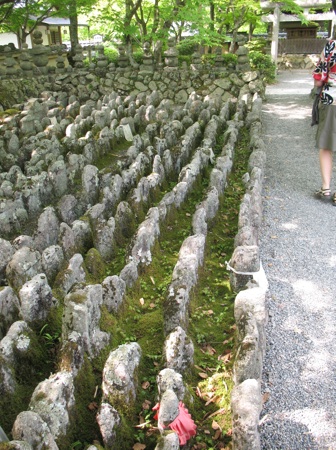
Thus ended our trip to Arashiyama. Of course, we had to walk back to the train station- a few miles away.
Though we didn’t take many photos of street scenes, much of the area was pretty. A lot of traditional older homes, and of course shops and restaurants along the way. It was quite a nice walk, and a nice way to end our stay in Kyoto.
